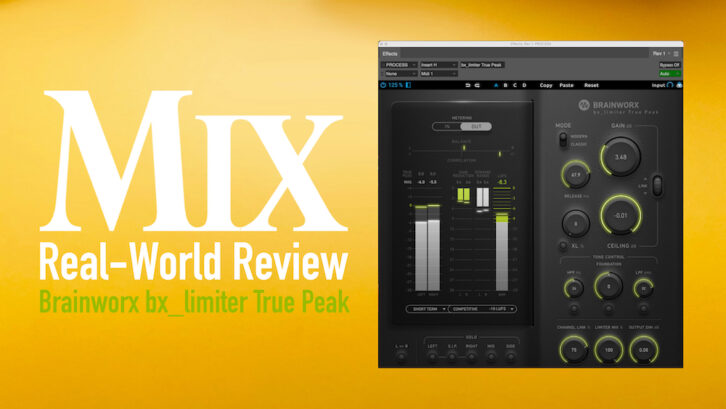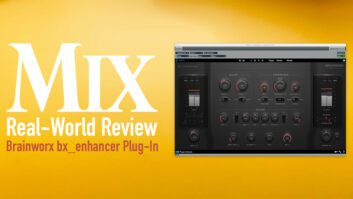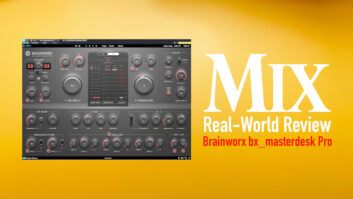
| MIX VERDICT: BRAINWORX BX_LIMITER TRUE PEAK |
| THE TAKEAWAY: “Brings plenty of options to the fine art of massaging 0 dBFS levels without creating inter-sample ‘overs.’” |
| COMPANY: Brainworx • www.brainworx.audio.com PRICE: $299 PROS: • Transparent control of peaks. • Useful options and tonal controls. • Maintains excitement at extreme settings. CONS: • Somewhat expensive. • Lacks dithering. |
The concept of the simple, brutish, one- or two-knob limiter may still be viable for mono channel insertion, but for most of us, our L-R bus, or mix, or master includes a complicated and fully featured limiter plug-in—something like Brainworx’s bx_limiter True Peak, which brings plenty of options to the fine art of massaging 0 dBFS levels without creating inter-sample “overs.”
There are a number of familiar controls here: Gain, Ceiling, Release, Mode (Classic or the quicker Modern) and a Link control that lowers the Ceiling as you raise the Gain.
Some of the finer controls include Channel Link (the company recommends this stay at 75 percent for music mastering), Limiter Mix (if you like to parallel-process), and numerous monitoring options (Left, Right, Solo In Place, Mid, Side, L/R swap) with informative metering (level, gain reduction, true peak, dynamic range and LUFS).
Brainworx’s well-known saturation circuit, XL, is included, along with a bypass button, which is eminently useful for fine-tuning this feature. XL is more subtle than extreme, but in a way, that makes it useful for the modern practice of inaudibly smoothing out peaks with saturation (often combined with a clipper), thereby allowing much more overall level.
True Peak also has tonal controls, which as you’ve probably guessed, are more broad and subtle than EQ and therefore suitable for mastering purposes. The Foundation control offers a way to pump up the bottom end in a way that is gently musical, not unlike a colorful transformer; thankfully, it too has a bypass to aid in fine-tuning. There’s also a high-pass filter and a low-pass filter for the side-chain, which essentially allows you to ignore really low and really high frequencies that may cause undesirably severe or jumpier operation.
Austrian Audio OD5, OC7 and OC16 – A Mix Real-World Review
Four memory states (A/B/C/D) help make complicated comparisons easier so you can maintain your objectivity; ample window resizing and numerous color options keep things looking nice, too (I like lime green).
Overall, there’s enough control here to allow you to royally screw things up if you’re not careful, but I find myself frequently using similar settings and largely just automating Gain and tweaking Release on bass-heavy masters.
So let’s address the elephant in the room: true peak limiting, or the concept of preventing consecutive samples at 0 dBFS from creating playback distortion when converted from digital to analog (or converted via a codec). Is it a smart practice that ensures clean downstream playback, or is it an energy-killer that takes away the competitive bite from your blazing masters? I hear wisdom in both arguments, but I’ll concur that many true peak limiters do actually take away something aggressively desirable, and bx_limiter True Peak does indeed seem to maintain all the boldness and energy of the peaks, while keeping true peaks down to an acceptable 0.1 dBFS, at least according to my downstream, third-party meters.







